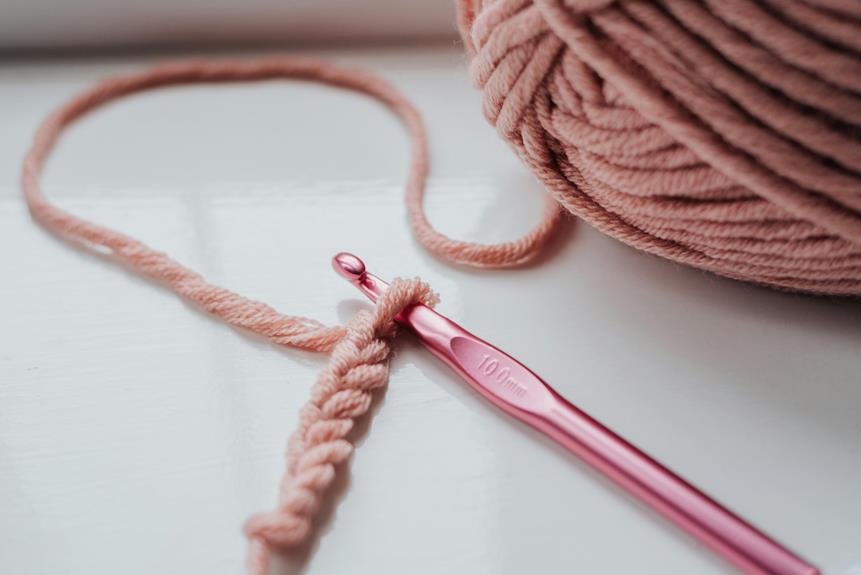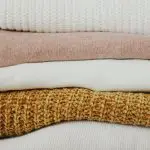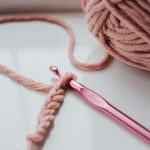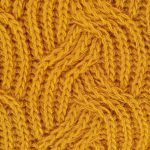When you run your hand over a piece of chenille fabric, you can't help but notice its soft, fuzzy texture. But how does it compare to velvet, a fabric known for its luxurious smoothness? At first glance, it's clear that these two fabrics have distinct textures, but what sets them apart? Is it the length of the fibers, the density of the weave, or something else entirely? As you explore the world of textiles, you'll discover that the differences between chenille and velvet go beyond just their tactile experiences. But what exactly are those differences, and how do they impact the way you use these fabrics?
Table of Contents
What Is Chenille Fabric?
Chenille fabric is a type of textile that's made from cotton, polyester, or a blend of both. The name 'chenille' comes from the French word for 'caterpillar,' which refers to the fuzzy, caterpillar-like appearance of the fabric.
To make chenille fabric, manufacturers use a special yarn that's made from extra-long staple fibers. These fibers are woven together in a way that creates a soft, plush pile on the surface of the fabric.
The pile is what gives chenille its signature texture, which is often described as fuzzy, soft, and slightly stretchy.
Chenille fabric is often used to make clothing, upholstery, and home decor items, such as blankets and throws. It's a popular choice because it's warm, lightweight, and easy to care for. You can machine wash and dry chenille fabric, making it a practical choice for everyday use.
Understanding Velvet Texture
As you explore velvet's unique texture, you'll notice that it's characterized by a soft pile construction that gives it a plush feel.
When you run your hand over its surface, you'll appreciate the smooth finish that's achieved through a precise weaving process.
To truly understand velvet's texture, let's take a closer look at what makes it so distinctive, starting with its soft pile construction, smooth surface finish, and dense weave pattern.
Soft Pile Construction
Velvet's soft pile construction is achieved through a unique weaving process that involves two sets of yarns: a base fabric and a pile yarn, which are woven together to create the plush surface. As you examine the fabric, you'll notice that the pile yarns are woven in a way that creates a dense, plush pile. This construction gives velvet its signature smooth, luxurious feel.
Here's a closer look at the weaving process:
| Yarn Type | Function | Characteristics |
|---|---|---|
| Base Fabric | Provides foundation | Thin, tightly woven |
| Pile Yarn | Creates plush surface | Thick, soft, and dense |
| Binding Yarn | Holds pile yarn in place | Thin, strong, and flexible |
| Pile Height | Affects texture | Short, medium, or long |
| Weave Density | Impacts softness | Tight weave or loose weave |
When you run your hand over velvet, you're experiencing the result of this unique weaving process. The soft pile construction is what sets velvet apart from other fabrics and gives it its distinctive texture. By understanding how velvet is made, you can appreciate the craftsmanship that goes into creating this luxurious fabric.
Smooth Surface Finish
When it comes to understanding velvet texture, the smooth surface finish is a defining characteristic that sets it apart from other fabrics, and it's achieved through the unique interplay of the pile yarns and the weaving process.
As you run your hand over velvet, you'll notice how the smooth surface seems to glide under your fingertips. This is due to the way the pile yarns are woven to create a dense, plush surface that's free from any rough or uneven textures.
The smooth surface finish of velvet is also what gives it its signature sheen and luster. When light hits the fabric, it reflects off the smooth surface, creating a subtle shine that's both elegant and sophisticated. You'll often notice this effect in velvet clothing and upholstery, where the smooth surface finish adds a touch of luxury and refinement.
In contrast to other fabrics, velvet's smooth surface finish is remarkably consistent, with no loose threads or uneven patches to disrupt the smooth texture. This makes it a popular choice for high-end fashion and interior design, where a smooth, sophisticated finish is essential.
Dense Weave Pattern
The smooth surface finish of velvet is closely tied to its dense weave pattern, which is achieved by weaving two sets of yarns at different angles to create a thick, plush pile.
This unique weaving technique is what sets velvet apart from other fabrics. By intersecting the yarns in this way, the fabric becomes incredibly dense, with a high thread count that contributes to its luxurious feel.
As you examine the weave pattern more closely, you'll notice that the yarns are woven in a specific way to create a cut pile. This means that the yarns are cut at an angle, rather than left looped, which allows them to lie flat against each other, creating a smooth surface.
The dense weave pattern also helps to prevent the yarns from fraying or snagging, which adds to the fabric's durability. When you run your hand over the surface of velvet, you'll feel the subtle texture of the yarns, which is a direct result of the dense weave pattern.
This texture is a hallmark of velvet and helps to distinguish it from other fabrics.
Pile Height Comparison
Comparing the pile heights of chenille and velvet fabrics reveals distinct differences in their textures and overall appearances. When you run your hand over these fabrics, you'll notice that chenille has a much longer pile height than velvet. This is because chenille is made with a specific type of yarn that is designed to create a soft, fuzzy texture.
Here's a comparison of the pile heights of chenille and velvet fabrics:
| Fabric Type | Pile Height | Texture |
|---|---|---|
| Chenille | 1/4 inch (6 mm) | Soft, fuzzy |
| Velvet | 1/8 inch (3 mm) | Smooth, plush |
| Velvet (high-pile) | 1/4 inch (6 mm) | Luxurious, dense |
As you can see, chenille has a significantly longer pile height than regular velvet. However, some high-pile velvets can have a similar pile height to chenille. When you're choosing between these fabrics, consider the texture you want to achieve. If you want a soft, fuzzy texture, chenille may be the better choice. If you prefer a smooth, plush texture, velvet may be the way to go.
Softness and Durability Factors
When choosing between chenille and velvet, you're probably considering how soft and durable each fabric is.
You'll want to examine the fiber strength of each material, as it plays a significant role in determining how well they'll withstand wear and tear.
Fiber Strength Variations
In evaluating chenille and velvet for upholstery or fabric projects, fiber strength is a key factor, directly influencing their softness, durability, and overall performance. You'll want to consider the type of fibers used in each fabric.
Chenille, for instance, is often made from cotton, polyester, or a blend of both. These fibers are generally strong and resilient, making chenille a great choice for high-traffic areas or heavy-use applications.
Velvet, on the other hand, can be made from a variety of fibers, including cotton, silk, or synthetic materials. While velvet fibers can be strong, they can also be prone to pilling or snagging, especially if they're made from lower-quality materials.
When it comes to fiber strength, you'll also want to think about the weave and construction of the fabric. A tight weave and dense construction can help to reinforce the fibers and make the fabric more durable.
In contrast, a loose weave or open construction can leave the fibers more vulnerable to wear and tear. By considering the fiber strength and construction of chenille and velvet, you can make an informed decision about which fabric is best suited to your needs.
Surface Smoothness Levels
Assessing the surface smoothness of chenille and velvet fabrics involves evaluating how the texture impacts their softness and durability. When you run your hand over these fabrics, you'll notice distinct differences in their surface smoothness levels. Chenille, with its fuzzy, cotton-like pile, tends to be softer and more prone to pilling. Velvet, on the other hand, has a smooth, plush surface that's often more durable.
- Pile height: Chenille's longer pile creates a softer, more textured surface, while velvet's shorter pile produces a smoother finish.
- Fiber density: Velvet's densely packed fibers contribute to its smooth surface, whereas chenille's looser weave can make it feel less smooth.
- Weave pattern: The weave pattern of each fabric also affects its surface smoothness, with velvet's tight weave creating a more uniform texture.
- Material blend: The type of fibers used in each fabric, such as cotton, polyester, or silk, can impact its surface smoothness.
Chenille Vs Velvet Smoothness
Comparing chenille and velvet smoothness can be subjective, but generally, velvet fabrics have a smoother pile than chenille due to the distinct differences in their weaves. When you run your hand over velvet, you'll notice a more even and uniform texture, whereas chenille can feel slightly more rugged. This is because velvet's weave creates a denser pile, resulting in a softer and more luxurious feel.
Here's a comparison of the smoothness levels of chenille and velvet:
| Fabric | Smoothness Level | Description |
|---|---|---|
| Velvet | High | Soft, even, and uniform texture |
| Chenille | Medium | Slightly rugged, but still soft to the touch |
| Velvet-Chenille Blend | Medium-High | Combines the smoothness of velvet with the durability of chenille |
When choosing between chenille and velvet, consider the intended use of the fabric. If you want a luxurious and smooth texture, velvet might be the better choice. However, if you prioritize durability and a more casual look, chenille could be the way to go. Ultimately, the decision comes down to your personal preference and needs.
Fiber Content and Weave
Considering the smoothness of chenille and velvet is just one aspect of their overall characteristics, you'll also want to examine the fiber content and weave of each fabric to make an informed decision.
The fiber content of chenille and velvet can vary, but chenille is often made from cotton, polyester, or a blend of the two. Velvet, on the other hand, is typically made from cotton, silk, or a synthetic blend.
The weave of the fabric also plays a significant role in its texture and overall appearance. Chenille has a more open weave, which allows for a softer and more pliable fabric. Velvet, by contrast, has a denser weave, which gives it a more luxurious and smooth texture.
Chenille is often made from cotton, polyester, or a blend of the two. Velvet is typically made from cotton, silk, or a synthetic blend. Chenille has a more open weave, allowing for a softer fabric. Velvet has a denser weave, giving it a more luxurious texture. The fiber content and weave of each fabric can affect its durability and maintenance requirements.
Tactile Experience Difference
When you run your hand over chenille and velvet, the tactile experience is vastly different. Chenille's soft, fuzzy pile gives way to a gentle give, while velvet's smooth, plush surface provides a sensation that's both luxurious and indulgent.
You'll notice that chenille's texture is more casual and relaxed, making it a great choice for everyday items like throw blankets or pillows. Velvet, on the other hand, feels more formal and sophisticated, making it perfect for statement pieces like upholstery or evening wear.
As you explore the textures further, you might notice that chenille's fuzzy pile can sometimes feel a bit loose or uneven. Velvet's smooth surface can feel almost silky. This is because velvet's pile is cut to create a smooth, flat surface, whereas chenille's pile is left longer and more textured.
When you're choosing between the two, consider the vibe you want to create. If you want something cozy and laid-back, chenille might be the way to go. But if you're looking for something more elegant and refined, velvet is the better choice.
Frequently Asked Questions
Is Chenille Suitable for People With Sensitive Skin?
You'll be happy to know that chenille is generally gentle on skin, making it a great choice for people with sensitive skin. Its soft, fuzzy texture is less likely to cause irritation or allergic reactions.
Can Velvet Be Used for Outdoor Upholstery?
You might think velvet's softness makes it perfect for outdoor upholstery, but it's not the best choice due to its susceptibility to water damage, fading, and pilling. It's better suited for indoor, protected spaces.
How Does Chenille Hold up to Wrinkles?
You'll find that chenille is a great choice for upholstery because it's naturally wrinkle-resistant, and it holds up well to everyday use. Chenille's soft, fuzzy pile helps it bounce back from wrinkles, making it a low-maintenance option.
Is Velvet Prone to Pilling or Fraying?
You might wonder if velvet is prone to pilling or fraying. Velvet's smooth, plush pile can make it susceptible to pilling, especially with heavy use. However, high-quality velvet is less likely to fray.
Can Chenille Be Used for Activewear?
You're considering chenille for activewear, but it's not the best choice. Chenille's soft, fuzzy texture can be prone to pilling, and it may not provide the necessary moisture-wicking properties or durability for high-intensity activities.
- Tetron Fabric for Marine Applications: Durability and Use Cases - June 18, 2025
- Tetron Fabric for Outdoor Furniture: Weather Resistance and Care - June 18, 2025
- Tetron Fabric for Wall Coverings: Style and Application Tips - June 18, 2025







